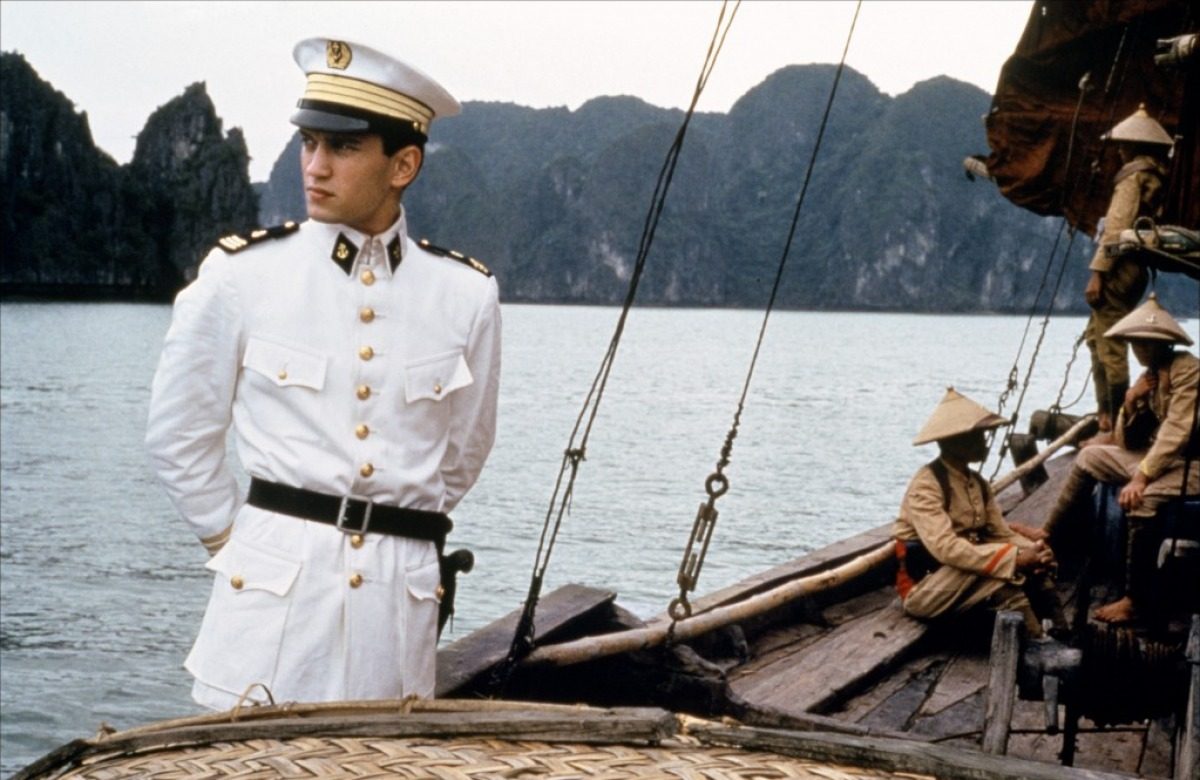Indochine

Régis Wargnier
France – 1992

Screenplay: Erik Orsenna, Louis Gardel, Catherine Cohen, Régis Wargnier
Cinematography: François Catonné
Production: Paradis Films, La Générale d’Images, Bac Films, Orly Films, Ciné Cinq, Centre National de la Cinématographie, Club des Investissments Canal+, Sofica, Sofinergie, Investimage, Cofimage
Language: French, Vietnamese
Duration: 152 min
Color: Color
Synopsis: Born and raised in French Indochina, Éliane is the imperious owner of a rubber-plantation. When her best friends, members of the Nguyễn Dynasty, die in a plane crash, she adopts their little girl Camille to raise as her own. Meanwhile, Éliane begins a torrid affair with a younger French navy officer, Jean-Baptiste. Some years later, when Camille has grown into a young woman, a civil unrest incident brings her and Jean-Baptiste together, and they fall love. Éliane is livid and campaigns to have Jean-Baptiste transferred. Camille marries Tanh, the son of wealthy merchants but a secret communist sympathizer. Camille also has a secret: she still loves Jean-Baptiste, and now that she has freed herself from mother’s watchful eyes, she heads towards his outpost. As she travels the country, she begins to understand the people of her homeland. When the colonial government tears her away from Jean-Baptiste and their infant child Étienne, Camille is imprisoned for crimes against the state, while Éliane adopts the baby. Camille experiences a political awakening and becomes a communist, while her incarcerated lover Jean-Baptiste, awaiting a court-martial, is found dead in his cell under peculiar circumstances. As Vietnam descends into civil war, Éliane abandons the plantation and relocates to France together with Étienne.
Notes:
Régis Wargnier’s Indochine, released in 1991, is one of the great successes of the French heritage film genre, a hit at the box office and winner of the Oscar for Best Foreign Language Film. It also represents a most lucrative fruit of a Franco-Vietnamese agreement whereby France was allowed to co-produce in a country where her cultural (and eventually economic) influence was deemed beneficent. The title “Indochine” conjures up a world from which the affix “French” is almost inseparable. It is an evocation of a past which even within the film is diffused with the light of remembrance. History is confronted, both diagetically and in terms of the production itself, in a new era of post-colonial / post-independence collaboration, while on the domestic front Wargnier’s film allowed France to come to terms with her colonial past at a time of economic hardships that French politicians in the early 1990s referred to as “the construction of Europe.”
The casting of Deneuve in the central role necessarily bestows a symbolic status on the figure of Éliane: the actress is not only the leading French female star, but also quite literally the iconic representation of the French Republic, having replaced Brigitte Bardot as the model for Marianne, the female personification of the Republic displayed in town halls throughout the country. Where Éliane is a stand-in for France, Camille symbolizes the union between colonial and native elites, but ultimately rejects her legacy in favour of independence. Éliane represents colonial maternalism, while the rebellious “native” daughter casts off her privilege, an action paralleled by her fiancé Tanh, the scion of a rich merchant house who becomes a cadre of the Communist Party. Both Camille and Tanh, partners in an arranged marriage, abandon their mothers and the colonial/feudal world they represent for a life of clandestine political activism. The educated Annamite elite become transformed into the leaders of the people, the story seems to suggest.
Tanh, expelled from France for demonstrating in solidarity with the Vietnamese revolutionaries, is the archetypal native intellectual whose anti-colonialism is fueled by Western education and its humanist ideals of liberty and equality. Conversely, it is Camille that is the true Vietnamese heart of the film, because her transformation and political awakening are the result of a long personal hardship, and of suffering the realities of life in Annam and Tonkin: famine, disease, forced labour. The “Red Princess” as she becomes known, is far removed from the refined colonial society in which she had been brought up. Early in the story, Éliane narrates that in her youth, she believed that “the world is made up of things that cannot be separated: men and women, mountains and plains, humans and gods, Indochina and France.” In the end, she sells the plantation and relocates to France, a country in which she truly is a foreigner. But even as she admits that separation is an inevitability, we learn that she has been narrating the story to Étienne, Camille and Jean-Baptiste’s now grown son who represents not a place but a relationship – one that the film hopes would remain after all else is said and done.
Among Wargnier’s subsequent works, Une Femme Française (1995) won several awards at the Moscow International Film Festival. The film tells the epic story of a French woman and her family during the war years. In 1999, the director teamed up once again with Catherine Deneuve for East/West, co-starring Sandrine Bonnaire and Oleg Menchikov, a film about the dark years of Soviet Stalinism. Most recently, Wargnier returned to South-East Asia with Le Temps des aveux (The Gate, 2014). Filmed in Siem Reap, Cambodia, the film recounts French sociologist François Bizot’s experiences at the hands of the infamous administrator of death Duch during height of the Khmer Rouge purges, a work that has received wide international acclaim.
Notes based on Nicholls, David. “Indochine.” History Today 46, no. 9 (September 1996): 33.


